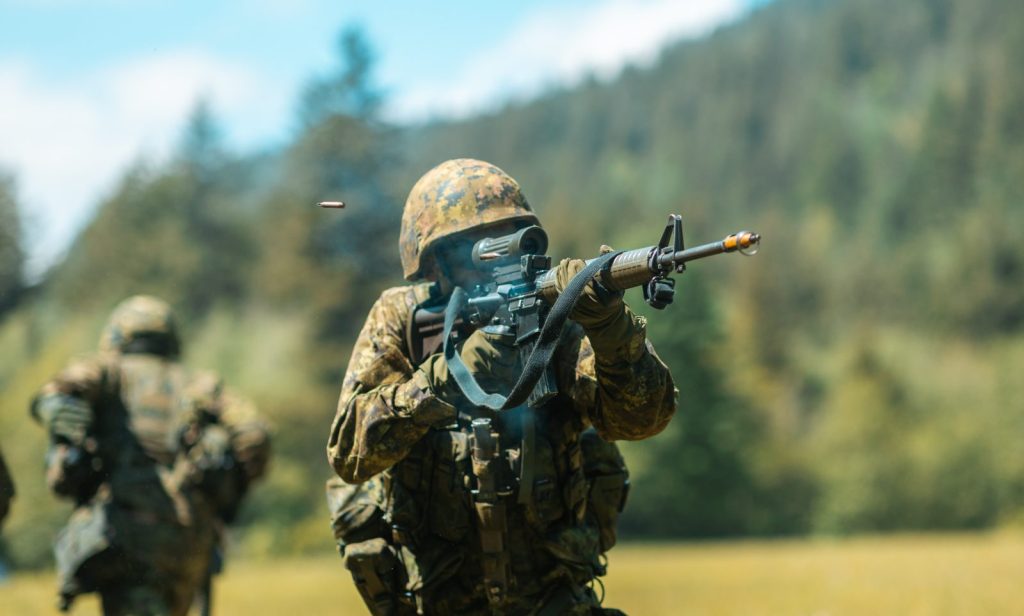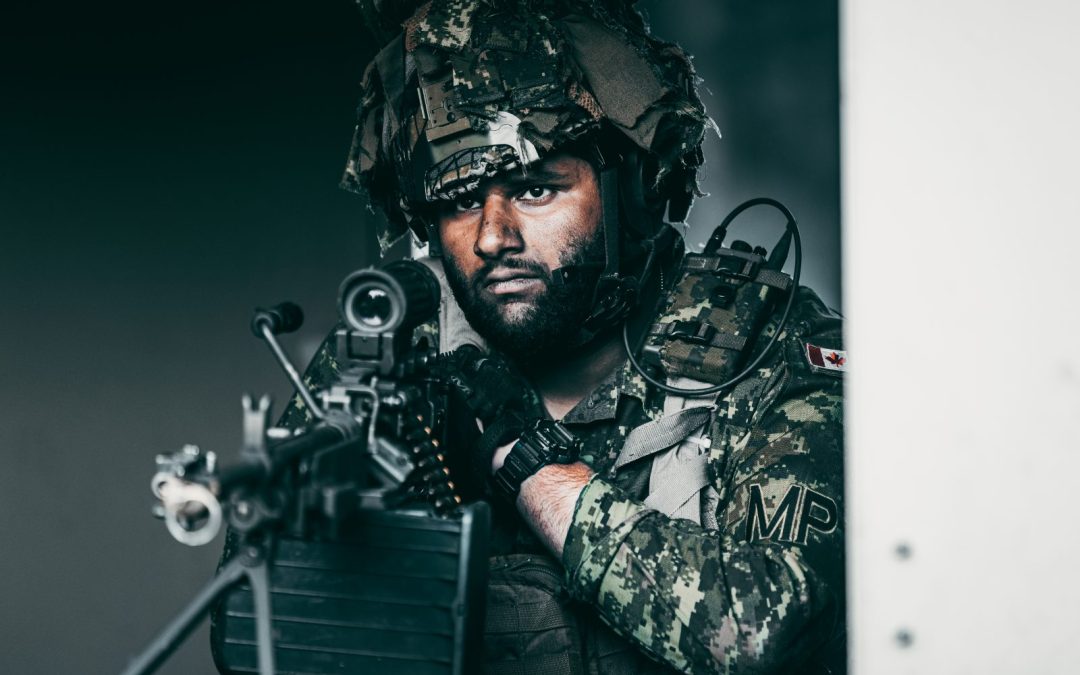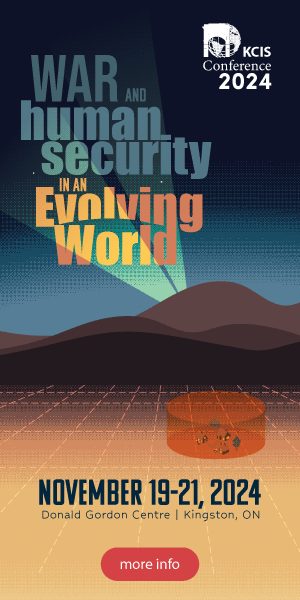by Ken Pole
The odds are that, regardless of your rank in the Army, you have literally had your fingertips on something that made you a more effective warrior. That’s the C79 optical sight, a key piece of kit designed, developed and manufactured by Raytheon ELCAN for the standard infantry rifle, the Colt Canada C7, which was adopted in 1984 after more than 150 refinements by Colt’s predecessor, Canadian Diemaco.
The original C79, which became a valued accessory on many of our allies’ rifles after its debut in 1989, really came into its own with the advent of the upgraded C7A1 rifle and its C7A2 successor.
A 3.4-power magnification (3.4x) scope affords more mid-range accuracy out to longer ranges while still providing a reasonable field of view for most distances. Also used on the Colt C8A3 carbine, it has a distinctive green rubber armoured cover which helps it blend with the standard Canadian Disruptive Pattern (CADPAT) uniform.
This Canadian innovation has launched a full spectrum of optical and digital sights, used by allied militaries around the globe. A modified version, the M145, is on the U.S. Army’s M240B/L medium machine gun.
The next generation was the introduction of the world’s only dual-field-of-view optical sight to the U.S. SOPMOD Kit II in the early 2000s, designed and manufactured for Afghanistan’s asymmetric combat environment. Changes implemented after customer feedback included ambidexterity, decreased weight, increased battery life, and an accessory rail integrated into the housing.
Mike Lewis, a Newfoundlander with physics degrees from St. Francis Xavier and McMaster universities, is general manager at Raytheon ELCAN. Headquartered in Midland, Ontario, it’s a division of Virginia-based RTX Corp., the aerospace and defence conglomerate rebranded from Raytheon Technologies in July 2023.
Lewis joined the company as an engineer 17 years ago and eventually was rotated through various management positions before being promoted to his current role in early 2022. It’s a career track that has given him valuable insight into the history and potential future of weapons sights.
Looking back at the company’s evolution, he noted that in the 1970s, “Canada was at the forefront of Army services and really was renowned across the globe.” Among other things, “we were one of the first countries to have an optical sight on its rifles.” And it helped that “Canadian shooters have been known across the world as some of the best.”
As a result, “we’ve sold more than 450,000 rifle sights to 60 countries, and all of Canada’s allies in some shape or form have rifle sights that have been manufactured here,” he stated. Some 70,000 have been delivered to the Canadian Armed Forces (CAF).
The evolution of the C79 not only created a new technology but also jobs at Raytheon ELCAN: some 400 at present and projected to rise to nearly 500 in 2024. Many of its employees are former CAF personnel or are from families with CAF connections. “The pride we take from supporting Canadian troops and our allies is amazing,” Lewis said. “The flip side of that is the Army’s perspective; they’re getting a world-class Canadian product.
“From the government’s perspective, we’re creating capabilities in technology and jobs and promoting economic growth. … That’s the kind of thing we want to repeat as we think about how we can better serve Canada and move things forward in terms of what’s the next technology they want and how we can partner with Canada to give them the capability that supports the soldier.”
He acknowledged that while “it’s great” that a C79 sight can be “run over by a tank and still function,” it “might not be a great business model” in that it doesn’t have to be replaced every five or 10 years. “We know the importance of them and the reliability that’s required. [The sight] has got to survive in harsh operating environments. People’s lives depend on that.”

Still, there’s always room for improvement as sight technologies improve. As it focuses on its newer products, Raytheon ELCAN is providing greater magnification and multiple field-of-view functionality. “Most of our customer base has shifted to some of our products that have more capability … and my expectation and understanding is that Canada is moving toward that, too,” Lewis said.
Asked whether product evolution is driven by Army or corporate requirements, he said it “works best when it’s a partnership.” The company obviously is aware of developments in the market “but the best products happen when the customer is working with us.”
With the Canadian Army, feedback can come from individual troopers or through the traditional chain of command and procurement processes. Defence Research and Development Canada (DRDC) is open to testing Raytheon ELCON products, but Lewis believes “there’s always an opportunity for us to further that engagement.”
Just the day before his time with Canadian Army Today, Lewis had been chatting with a Royal Military College student about a “special project of choice,” one of several Raytheon ELCAN regularly proposes to RMC, covering the gamut of factors that go into sight production. “We fund some of those projects and support them with engineering capabilities,” he said.
Every year, 30 to 50 RMC students visit Midland as part of a series of visits to the private sector. There also are occasional sessions at Connaught Range in Ottawa, where shooting at distances out to 900 metres is possible.
“In all those instances, we’re looking for feedback and to answer questions,” Lewis said. “Individual soldiers can provide feedback in addition to the more formal procedures. We try to make it as open and as often as possible.”
That also applies in-house at Raytheon ELCAN. Design and engineering are upstairs while manufacturing is on the ground floor, and “there’s a constant interchange,” Lewis said. “If I go down to the assembly area, I’m just as likely to see an engineer trying to get a handle on the manufacturing process and whether there are maybe potential changes to incorporate on a future evolution.”


